Types of heating boilers: an overview of options and
The choice of a heating system for a house is a very serious matter and should be treated as responsibly as possible. Because otherwise, then you will either have to overpay for energy, or face constant problems.
What needs to be done in the first place is to study the theoretical part, that is, to find out what kind of heating boilers are and what you need to pay special attention to when choosing in the store.
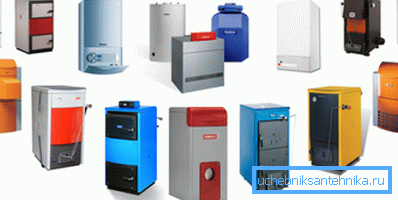
This is what we will do.
Heater overview
We will act according to a very simple scheme - as an illustrative example, take each of the options and consider its possible modifications, as well as advantages and disadvantages. In addition, we briefly touch on the nuances of mounting each of the products.
So let's start with the most popular solution.
Gas appliances
These types of heating boilers are very simple - the gas is fed into the body, and then the heat exchanger is heated during combustion. The heat exchanger heats up the coolant itself, which then enters the radiators.
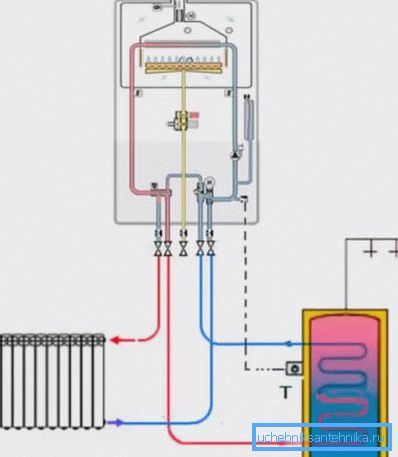
Here it is important to single out, first of all, the fact that gas units are wall-mounted and floor-standing. The features of each solution are discussed in the table below.
| Wall heaters: | Outdoor: |
| In most cases, you do not need to make a chimney - the pipe can be brought directly into the wall. Moreover, turbocharged models are often allowed to hang anywhere in the room. | There are parapet products, in them the chimney is a simple horizontal pipe that goes into the wall. In addition, there are standard options that require the installation of a full-fledged vertical hood. |
| Practically all models are double-circuit, that is, they can heat the house and supply hot water to the taps. At the same time the price of such devices is quite affordable. | Inexpensive options, as a rule, do not have the ability to supply hot water. Most often for hot water supply is used here cumulative boiler. |
| The devices take up little space, because almost all of the elements are hidden in a small case that looks like a regular wall cabinet. | Units of this type occupy quite a lot of space due to the dimensions of the body itself, as well as due to numerous additional elements such as circulating pumps for heating, expansion tanks, etc. Moreover, according to the rules, it is required to withstand free space around the heater itself for quick access to the device in case of an accident. |
In principle, it turns out that both options are good in their own way, just wall-mounted boilers are a bit cheaper and very often cannot work without electricity. In addition, they are not suitable if you want to heat a very large area, the optimal figure here is at home up to 150 sq. M. meters If the room is larger, it is better to purchase floor solutions.

As for the latter, it should be noted that floor-mounted appliances are able to work both from electric power and completely autonomously. In this case, any estimated power is possible. The downside is that the cost of good equipment of this type is quite high, and besides, installing the system with your own hands is quite difficult for an inexperienced person.
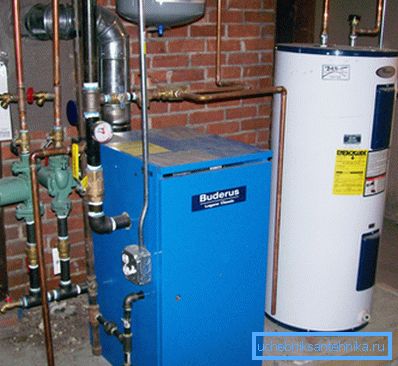
Well, if we talk about the service life, the options with a cast-iron heat exchanger last longer, since this metal is not subject to rust. However, the steel is more durable - cast iron is also afraid of shocks and sudden changes in temperature (because of this, it can simply burst).
Note! The cast iron heat exchanger tends to heat up slowly, but then it also cools slowly. This feature affects (for the better) the level of efficiency of the boiler, since after heating this metal, much less gas is spent on maintaining the required temperature of the heat exchanger.
In principle, we dealt with gas models, now let's consider the options that run on electricity.
Electric boilers
The rating of heating boilers of this type is headed, of course, by the heating elements. These are wall-mounted appliances that heat the coolant with the help of the heating element built into the body, and then serve it to the radiators with the help of a pump. Autonomous work in this case is impossible, since quite a lot of power is spent on heating the liquid.
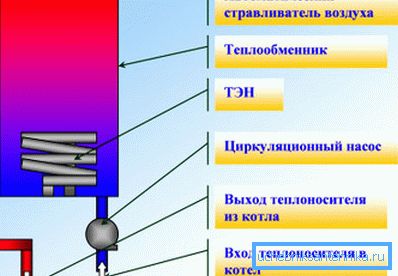
It should be noted that TEN units are so popular not because of their efficiency or economy.
The point here is in several points:
- Low cost of goods.
- Lack of a normal alternative. If there is no gas pipeline, then, in fact, there is nowhere to go - in most cases, inevitably, such systems will have to be installed.
- Easy installation. The instruction consists of literally several steps - hang the device on the wall, connect the supply and return pipes to it and connect the electrical cable. It does not need any approvals and permits.
Well, now for the cons.
- The high cost of paying for electricity (if in your case no subsidies are provided).
- Not very long service life. And it is not about the fact that the boiler will quickly break, but that its efficiency will decrease every year due to the formation of scale on the heating element. Just imagine - 1 mm of scale reduces the efficiency of the device by about 10%!
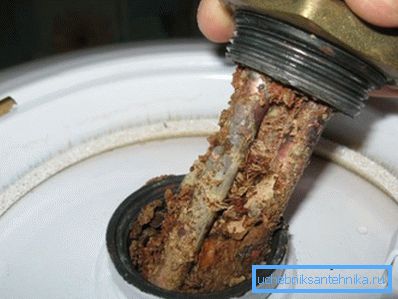
This is what concerns TEN designs. And there are also such products as induction electric boilers for heating - they are much more expensive than usual, but they work in a completely different way.
The point is that here for heating the element through which the coolant passes, alternating current is used. Water enters special tubes, heats up, and then gets into radiators.

The features of this solution are as follows:
- Long service life - approximately 20-25 years. The induction heat exchanger vibrates during the heating of the coolant, and due to this scale does not accumulate on its surface. That is, it turns out that the level of efficiency here is quite high - 97-99%!
- Installation of the device takes a minimum of time, effort and money - everything is done according to the standard scheme: fixing the boiler, supplying electricity to it and connecting the heating pipes. There are no separate boiler rooms, there is no complicated work in this case.
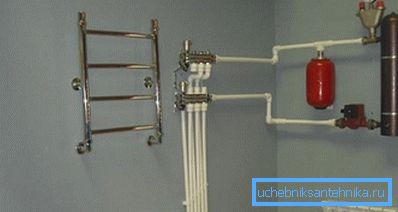
Tip: if you purchase an electric unit, then try to choose a product that can work not only with water as a heat carrier, but also with antifreeze. Antifreeze is convenient because during a power outage the coolant in the pipes and radiators will not turn into ice and therefore will not “break” the main line.
With electrical appliances finished, you can now consider how to choose an alternative type of heating boiler.
Solid fuel and liquid fuel aggregates
Solid fuel stoves are devices with a combustion chamber in which the flame does not move upwards, but vice versa. The peculiarity is that the heat obtained here is distributed very accurately and efficiently - that is, it does not extend outside the walls through the walls, but is fed into special flexible hoses. And through these flexible air ducts, warm air enters the necessary rooms.

Such units can operate autonomously, but a higher efficiency is achieved when connecting additional forcing electric fans. They enhance the burning force and the power of the air flow inside the sleeves.
These heaters from such fuel work:
- From firewood and sawdust.
- From straw and leaves.
- From cones and coal.
Note! Coal during combustion produces a rather high temperature, due to which the steel “burns through” faster than in the case of the same firewood. This means that if you plan to use coal as a fuel, it is imperative to clarify whether the unit you like can “work” with coal or not.
In principle, solid fuel structures are advantageous and convenient to use in such cases:
- If you have access to cheap wood, sawdust, etc.
- If there is no gas in the region, and there are constant power outages.
- As an additional boiler. This means that a furnace of this type can be used as a safety option. If the light suddenly disappears or the gas boiler breaks, then you can always warm the house with wood.
There is another alternative - you can look at designs that work from diesel or waste oil. Do not be afraid of this decision - modern boilers of this type are fire safe and, in principle, work quite economically. For example, in Greece, almost everything is heated at home in winter - long-term practice shows that nothing terrible happens.
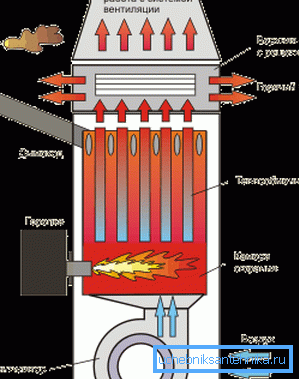
Devices can work autonomously, and can be connected to the mains to power the automation. In this case, automation can often work on batteries.
The only point that is extremely important to foresee here is the presence of a separate room for storing fuel, as well as for installing the unit. Naturally, it is undesirable to place and assemble it in residential premises.
Such is the rating of heating boilers. This concludes the review and summarize.
Conclusion
So we figured out the types of boilers, as well as introduced you to the main important points that can be useful when buying these or other devices. We hope that by using the information provided, you can objectively weigh all the factors and make a truly correct choice.
If the information did not seem to be enough, then you can watch the additional video at the end of this article.